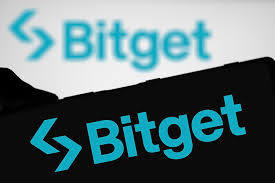[Long English Thread] The Evolution of Aave: From Dual Market Structure to Liquidity Hub
Chainfeeds Guide:
From the dual market structure of v3 to the upcoming Liquidity Hub and Spokes in v4, Aave is gradually evolving into the underlying infrastructure of on-chain capital markets.
Source:
Author:
Castle Capital
Opinion:
Castle Capital: Aave's growth has remained steady in the past, and its TVL recently reached an all-time high. This growth can be attributed to early advantages, continuous product iteration, and extensive multi-chain deployment. The protocol is currently deployed on 19 chains, but liquidity is highly concentrated: over 80% remains on Ethereum, followed by Plasma. Among various L2s, Arbitrum ranks first, followed by Linea and Base. This layout reflects Aave's priority in deepening Ethereum's security and depth, while selectively expanding to scaling networks with increasing user activity. Aave's deep liquidity makes it particularly attractive to high-net-worth users and institutions: these users can borrow large amounts without causing sharp increases in interest rates. This model was validated when the Ethereum Foundation deposited 30,800 ETH into Aave in February 2025. In addition, Aave has also entered RWA lending through the Horizon market, currently with a scale of about $600 million. By accepting tokenized money market funds (MMF) from issuers such as Superstate and Centrifuge as collateral, Aave is becoming a bridge connecting traditional institutions and DeFi. This is part of its larger strategy to attract institutional funds, complementing its strong on-chain user base. Aave's core architecture is based on a shared liquidity pool model: users deposit assets into the pool and receive aTokens representing their positions, which accrue interest over time and can be used as collateral to borrow other assets. Aave v3 introduced two different types of lending markets. Aave Prime is capital efficiency-oriented, supporting only blue-chip assets, with its core mechanism being Efficiency Mode (E-Mode), allowing highly correlated assets (such as wstETH and WETH) to be borrowed at up to 95% LTV, with a liquidation threshold of 96.5%. The current market size is about $1.17 billion. Aave Core is larger, with a scale of over $4.2 billion, supporting a wider range of assets and strengthening risk control through Isolation Mode, imposing exposure caps and lower borrowing ratios (usually below 85%) on high-risk assets. This dual market structure balances capital efficiency and system security, but also leads to capital fragmentation, as liquidity cannot freely flow between Prime and Core. The upcoming v4 focuses on solving this inefficiency. Aave's liquidity pools and reserves are governed by DAO parameters, including LTV, liquidation thresholds, borrowing switches, supply and borrowing caps, and an interest rate model (IRM) that dynamically adjusts based on utilization. These combinations provide a risk framework that adapts to market changes and is continuously adjusted by governance. Aave's Umbrella system (formerly Safety Module) provides key security guarantees for the protocol. Users can stake aToken or GHO to receive rewards, while also serving as a source of compensation in the event of bad debt; if insolvency occurs, staked assets can be slashed to cover losses. The DAO has committed to providing an initial bad debt guarantee of $100,000, forming an effective insurance layer. The liquidation mechanism is also central to Aave's resilience: the system tracks each lending position with a health factor (HF), and if the HF falls below 1, liquidation is triggered. Liquidators can repay up to 50% of the debt and receive collateral at a discount, thus maintaining the protocol's solvency. Aave v4 (already live on testnet) aims to solve capital fragmentation and further restructure the protocol into modular lending infrastructure. Its core is the Liquidity Hub, which aggregates liquidity from Prime and Core, allowing funds to flow dynamically and improving efficiency. The Spokes mechanism allows independent market instances to operate according to their own parameters, such as supporting long-tail assets and setting supply and borrowing caps, while being subject to the system rules of the Hub. Meanwhile, Aave's newly launched App helps retail users earn up to 6.5% APY and provides up to $1 million in balance protection. The app also supports on/off ramp services, enabling more new users to smoothly enter DeFi. With the modular design of v4, the advancement of Horizon's RWA, and strong liquidity barriers, Aave continues to consolidate its position as the "on-chain bank." [Original text in English]
Source of contentDisclaimer: The content of this article solely reflects the author's opinion and does not represent the platform in any capacity. This article is not intended to serve as a reference for making investment decisions.
You may also like
[English Long Tweet] Vitalik Devconnect Argentina Speech Breakdown: From EIP-7732 to zkVMs to Lean Ethereum
Exclusive Interview with Bitget CMO Ignacio: Good Code Eliminates Friction, Good Branding Eliminates Doubt
A software engineer’s philosophy of branding.

App delays and launch sniping: Base co-founder’s token issuance sparks community dissatisfaction
While most major altcoins are showing weakness, Jesse has chosen to issue a token at this time, and the market may not respond positively.

"Crypto bull" Tom Lee: The crypto market correction may be nearing its end, and bitcoin is becoming a leading indicator for the US stock market.
"Crypto bull" Tom Lee stated that on October 10, an abnormality in the cryptocurrency market triggered automatic liquidations, resulting in 2 million accounts being liquidated. After market makers suffered heavy losses, they reduced their balance sheets, leading to a vicious cycle of liquidity drying up.


![[Long English Thread] The Evolution of Aave: From Dual Market Structure to Liquidity Hub image 0](https://img.bgstatic.com/multiLang/image/social/03fe40dd0864cb5965b43f590e3194881763744422543.png)